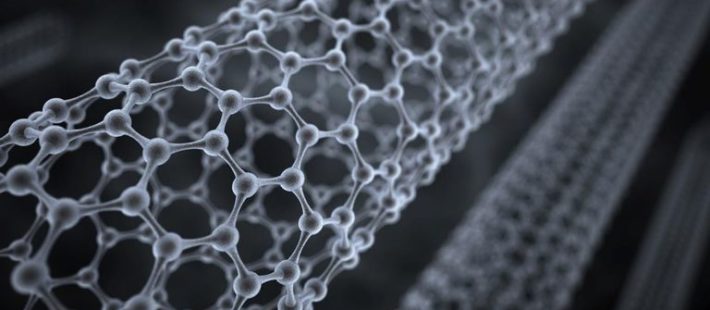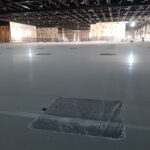Cement, aluminium, and stainless steel are among the most greenhouse gas-intensive materials. A construction staple, cement alone accounts for 4-7% of all anthropomorphic CO2 emissions. Replacing structural materials with composites that use carbon nanotubes (CNTs) as additives would reduce weight and improve strength. But CNTs themselves are usually produced using carbon intensive processes such as chemical vapor deposition.
Now researchers from George Washington University have demonstrated that CNTs can be produced from CO2 using low-energy chemical processes to drastically reduce emissions associated with construction materials [Licht et al., Materials Today Sustainability 6 (2019) 100023, https://doi.org/10.1016/j.mtsust.2019.100023].
“We have found a materials chemistry route for the direct high-yield transformation of the greenhouse gas CO2 into two simple products, CNTs and oxygen,” says the researcher Stuart Licht. The new process is based on molten carbonate electrolysis in which CO2 reacts directly with a solution phase oxide to form a carbonate. When an electrolysis current is applied to the carbonate, it splits into hot oxygen at the anode and CNTs at the cathode. The oxide continues to react with CO2 to renew the supply of carbonate, creating a cyclic process.
The infrastructure and costs would be similar to aluminium production via molten electrolysis of aluminium oxide, which is a widely used and inexpensive. The process is appealing as a mitigation approach because it is much cheaper than conventional technologies. Typical CO2 elimination approaches target costs of $30-50 per tonne, equating to an energy usage of 300-500 kWh per tonne, while the equivalent figure for molten electrolysis is less than 7 kWh per tonne of CO2 avoided. “Our carbon utilization technology is unusual in that it is effective for direct air (0.04% CO2) carbon capture, as well for direct carbon mitigation of flue gas, such as removal of the 5%, 30%, or 95% CO2 found in natural gas power, cement, or ethanol plants, respectively,” points out Licht.
If CNTs produced in this way could be exploited as structural additives in lightweight metal-based composites and cement, the potential carbon savings could be huge. “Global CO2 emissions of cement, aluminium, magnesium, titanium, and steel production are more than 2 gigatonnes per year. Replacement of these with CNT-based composites will significantly decrease global annual anthropogenic emissions of CO2 to help mitigate climate change,” says Licht. “Addition of CNTs to composites massively amplifies their carbon mitigation properties.”
Licht’s new approach has been shortlisted for the international Carbon XPrize, a competition to create valuable products from fossil fuel power plant flue gas. The group is undertaking a commercial demonstration of their approach, transforming 2-5 tonnes of CO2 a day captured from an 860 MW natural gas installation in Alberta, Canada, into CNT-based composites.
For further details: http://CarbonXPrize.org; http://C2CNT.com
Source: Materials Today












